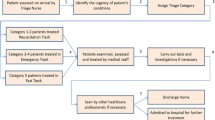Abstract
This paper presents the human factors analysis of the development processes, tools, guidance and organisational culture of a Tier 1 Finance institution to quantify and qualify human error incidents. Baseline analyses were performed to identify key themes behind human error in the institution’s Infrastructure Support Team for server-provisioning tasks. A number of recurring themes were identified during the baseline analyses that took the analysis beyond operator error, requiring an expansion to the original scope in order to consider wider issues such as the organisational processes, policies, personnel and working culture. A number of common themes were identified across the analyses that were considered to be key contributors to incidents of human error within the organisation.
Access this chapter
Tax calculation will be finalised at checkout
Purchases are for personal use only
Similar content being viewed by others
References
Nielsen, J., Molich, R.: Heuristic evaluation of user interfaces. In: Proceedings of ACM CHI 1990 Conference, Seattle, WA, 1–5 April, pp. 249–256 (1990)
Norman, D.: Design principles for human-computer interfaces. In: Proceedings of SIG CHI 1983 Conference, Boston, MA, 12–15 December, pp. 1–10 (1983)
Schneiderman, B.: Designing the User Interface: Strategies for Effective Human-Computer Interaction. 5th edn. Addison-Wesley (2009)
Ministry of Defence. Defence Standard 00-250 Human Factors Integration for Defence Systems. Issue 1 (2008)
Author information
Authors and Affiliations
Corresponding authors
Editor information
Editors and Affiliations
Rights and permissions
Copyright information
© 2018 Springer International Publishing AG
About this paper
Cite this paper
Wright, A., Borras, C. (2018). A Sound Investment: Managing Human Error in the Finance Sector. In: Boring, R. (eds) Advances in Human Error, Reliability, Resilience, and Performance. AHFE 2017. Advances in Intelligent Systems and Computing, vol 589. Springer, Cham. https://doi.org/10.1007/978-3-319-60645-3_28
Download citation
DOI: https://doi.org/10.1007/978-3-319-60645-3_28
Published:
Publisher Name: Springer, Cham
Print ISBN: 978-3-319-60644-6
Online ISBN: 978-3-319-60645-3
eBook Packages: EngineeringEngineering (R0)




